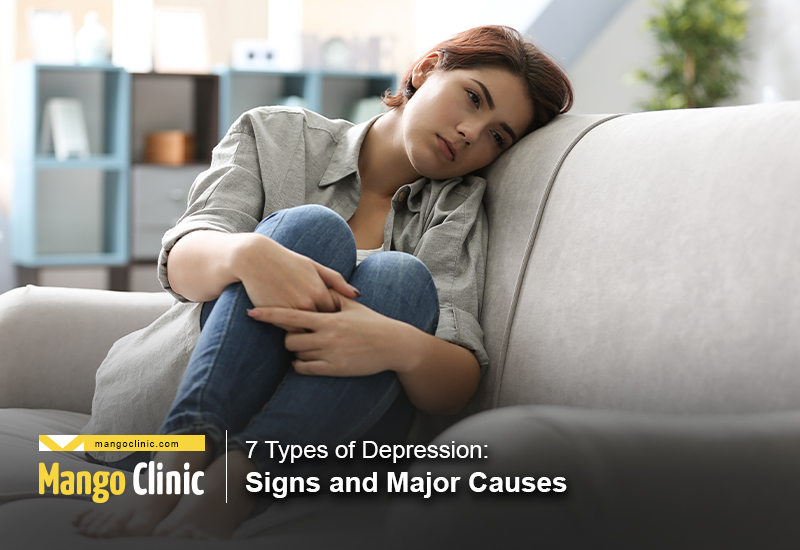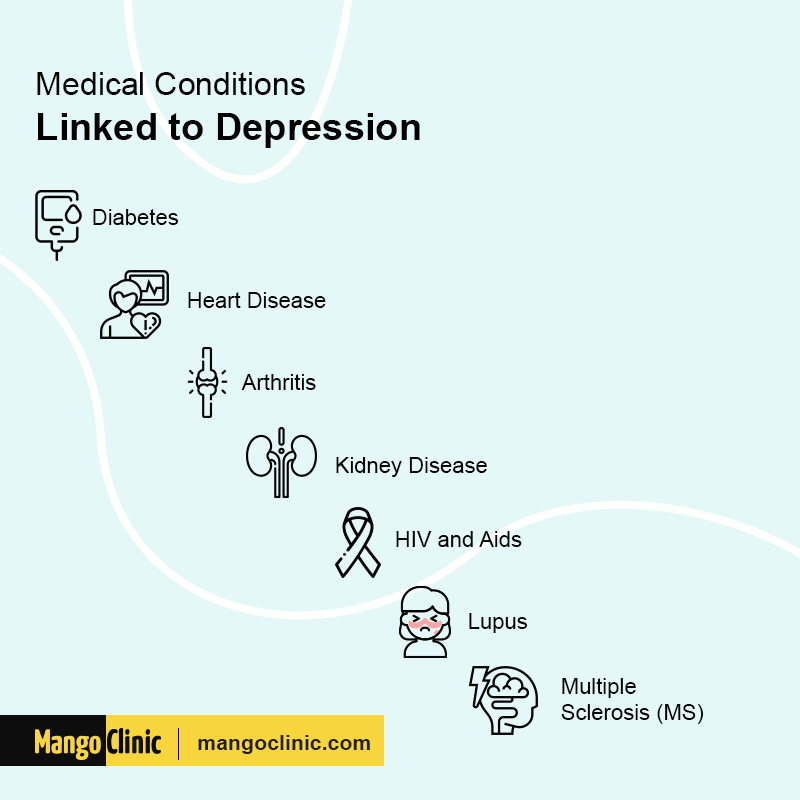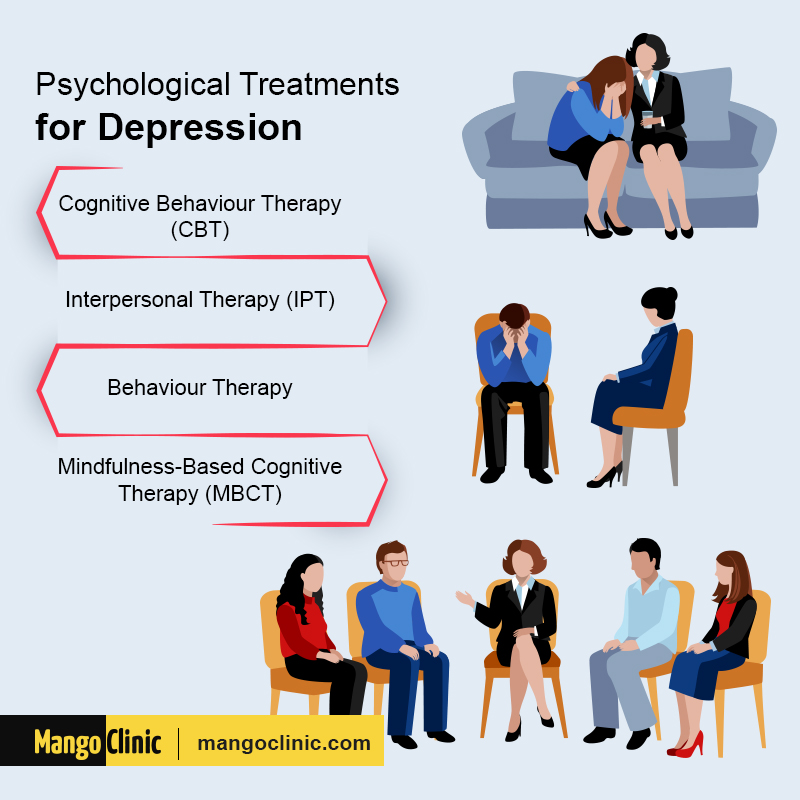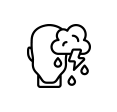7 Types of Depression: Signs and Major Causes

Depression is a mood disorder characterized by a persistent feeling of sadness and a general loss of interest in things that would normally bring you some pleasure. The Diagnostic and Statistical Manual of Mental Disorders, 5th Edition (DSM-V) gives some insights for understanding depression and according to the criteria, you may be having a depressive episode if you experience these episodes for at least a few weeks.
Want help with depression? Click the button below to book your appointment.
There are several classifications of depression. Seven of these depression types are as follows:
Table of Contents
Types of Depression
1. Major Depressive Disorder (MDD)
Also known simply as major depression or clinical depression, this is indeed the classic form and most common type of depression.
To be diagnosed with major depression, you must have 5 or more of the following symptoms:
- Feelings of sadness
- Feelings of worthlessness
- Feeling “empty” and hopeless
- Feelings of guilt
- Irritability
- Changes in appetite
- Loss of energy and fatigue
- Thoughts of suicide and death
There are two subtypes of major depressive disorder, namely atypical depression, and melancholic depression. People with melancholic depression tend to ruminate over some guilt-ridden thoughts and have trouble sleeping. This subtype is common among seniors. On the other hand, atypical depression is more common among young adults. It presents with feelings of anxiety and irritability and people with atypical depression tend to sleep a lot.
2. Persistent Depressive Disorder (PDD)
Also known as dysthymic disorder or dysthymia, people with this type of depression have depression symptoms lasting for at least 2 years. A child or teen may be diagnosed with PDD if their symptoms last for a year or more.
While the low moods and other symptoms last longer, they are not as severe or as intense as with other types such as major depression. To be diagnosed with PDD, you must have two or more of the following symptoms:
- Sleep problems
- Low energy and fatigue
- Low self-esteem
- Feelings of hopelessness
- Change in appetite
- Poor concentration
- Difficulty making decisions

3. Major Depressive Disorder with Seasonal Pattern
Commonly known as seasonal depression, this type of depression was previously defined as seasonal affective disorder (SAD.) This is a recurring kind and common in the winter.
Experts have proposed that seasonal depression is tied to the lack of natural sunlight. Symptoms usually last from early winter through to the springtime. Research has also pointed to an imbalance of serotonin and an overabundance of melatonin, which is the sleep hormone.
There is a less common type of seasonal depression referred to as a summer-onset seasonal depression. As the name suggests, it occurs in the summer and spring.
This type of depression is diagnosed after at least two years of recurring symptoms. Symptoms of major depressive disorder with the seasonal pattern are common with other types of depression and include:
- Feelings of anxiety
- Lack of energy and general fatigue
- Increase in appetite and weight gain
4. Bipolar Disorder
This type of depression is also called bipolar depression or manic depression. People with bipolar depressive illness experience extreme mood fluctuations as well as their sleep patterns, energy, and general behavior. You may feel hopeless and lethargic one day and bursting with energy and feeling euphoric the next.
You must experience at least one bout of mania to be diagnosed with bipolar disorder. For some, these extreme fluctuations can happen up to several times a week, and for others, it can be quite infrequently, such as once or twice a year.
A difference in the severity of the manic symptoms is what distinguishes between bipolar 1 and bipolar 2 disorder. The mania is more severe in bipolar 1.
Get proper treatment for depression from expert doctors. Click the button below to book your appointment.
5. Psychotic Depression
Psychotic depression is characterized by symptoms of both depression and psychosis. People with this type of depression experience depressive episodes that are so severe that they experience psychotic symptoms.
To be diagnosed with psychotic depression you must have experienced a depressive disorder lasting for at least two weeks accompanied by psychotic symptoms, namely hallucinations, and delusions. The content of these hallucinations and delusions are usually consistent with or involve depressive moods such as guilt.
6. Peripartum/Postpartum Depression
Pregnancy puts many women at an increased risk of depression. Depression during this time is often a combination of several factors.
Baby blues are quite common following birth as you adjust to a new baby. These blues are different from peripartum depression which lasts longer and has a profound impact on the relationship you will have with the new baby, spouse, and other family members.
Symptoms of peripartum depression usually appear within a week to a month after delivery. Unlike the baby blues that usually go away without treatment, treatment is necessary for postpartum depression.
Symptoms include:
- Extreme moods ranging from anger and anxiety to hopelessness
- Irritability
- Crying
- Restlessness
- Fatigue
- Change in appetite and weight
- Lack of concentration
- Rumination
- Unwanted thoughts, including extremes such as how to self-harm or harm the baby
- Insomnia
Some women will experience depression throughout their pregnancy and not just after delivery. Perinatal depression is the inclusive term doctors use to describe depression that may occur during pregnancy and after delivery.

7. Premenstrual Dysphoric Disorder (PMDD)
This disorder is the more severe form of premenstrual syndrome (PMS) and affects up to 10% of women who are of childbearing age. Symptoms of PMDD include irritability, anxiety, and general sadness.
These symptoms may start to show after ovulation and throughout that window of time before menstruation starts.
Scientists believe that PMDD is a result of abnormal sensitivity to the hormonal changes that occur during the menstrual cycle.
Depression Causes and Risk Factors
There are several causes and risk factors for depression including the following:
1. Brain Chemistry Imbalances
Neurotransmitters such as dopamine, norepinephrine, and serotonin play a big role in mood regulation, experts believe that imbalances in these brain chemicals can cause depression. It’s, therefore, no surprise that some of the medications used to treat depression target restoring the balance in these levels of brain chemicals.
2. Physical Health and Medical Conditions
People suffering from a chronic illness are at a higher risk of experiencing symptoms. Conditions such as sleep disorders, cancer, multiple sclerosis are top among the list of medical conditions that are a risk factor for depression.
The toll of a physical health condition can also impact your mental health. Again, some illnesses such as thyroid disorders cause symptoms that are similar to those of depression.
Save yourself from chronic forms of depression. Click the button below to book your appointment.
3. Genetics and Family History
You are at a greater risk of developing depression if there is a history of depression and other mood disorders in your family. Family studies have shown a strong connection between depression and genetics. That being said, researchers are yet to pinpoint the exact genes that affect and increase the risk of depression.
4. Risk Factors Related to Lifestyle
From poor nutrition to stress and substance use, there are several lifestyle choices that can put you at a greater risk of suffering from depression. While you may not be able to change other risk factors such as genetics and you have little control over brain chemistry, you have full control over these lifestyle choices that are a risk factor.
Are Depressed Brains Different?
The thalamus, amygdala, and hippocampus are the main areas of the brain affected by depression.
Research has shown that a depressed brain has a smaller hippocampus. It gets smaller with every bout of depression. Experts believe that stress, which plays a huge role in depression, causes this shrinkage by suppressing the production of new nerve cells in this part of the brain.
A depressed brain also has more activity in the amygdala. This is the part of the brain associated with emotions including pleasure and anger. It gets activated when someone has or recalls an emotional experience, such as the loss of a loved one.
Experts believe that people with depression have some of the functionality of the thalamus impaired. This is on account of impaired nerve cell growth in this brain region.

What Type of Depression Do I Have?
A diagnosis by a doctor is the sure way to tell which type of depression you have. Diagnosis may involve:
- A psychiatric evaluation performed against the DSM-V criteria.
- Physical examination and blood tests to rule out other medical conditions
Proper treatment can save you from depression-related diseases. Click the button below to book your appointment.
Get in Touch
Treatment plans for depression involve psychotherapy and medication. Noticed the signs and symptoms of depression? Contact Us at Mango Clinic for a clinical diagnosis and effective treatment plan or click the banner below to book your appointment.





